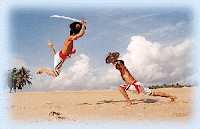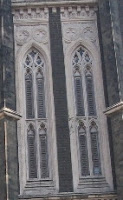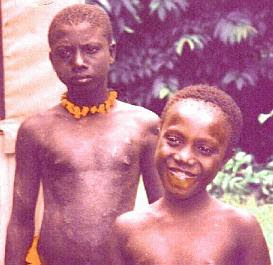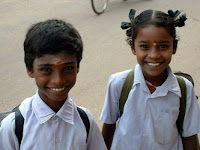 The Mumbai Magic Chor Bazaar Walk ends at the Gol Deoul temple. I was hanging around, saying goodbye to my guest, when I spotted this road sign - Bhandari Street.
The Mumbai Magic Chor Bazaar Walk ends at the Gol Deoul temple. I was hanging around, saying goodbye to my guest, when I spotted this road sign - Bhandari Street.
I knew that the Bhandaris were among the earliest settlers in Mumbai. Raja Bhimdev, who ruled this area in the 13th century, created a capital city at Mahim (Mahikawati). With him came the Bhandaris. The Bhandaris in Raja Bhimdev's employ were originally toddy tappers.
 Have you seen them? The guys that shimmy up tall trees and collect palm wine? It's an interesting sight. I thought I'd read up a bit more about them - so I hunted around, and found out the community has a little legend about why they shimmy up trees!
Have you seen them? The guys that shimmy up tall trees and collect palm wine? It's an interesting sight. I thought I'd read up a bit more about them - so I hunted around, and found out the community has a little legend about why they shimmy up trees!
The story goes thus - Once, Lord Shiva mounted an army and went to war against the demon called Tilakasur. He stopped on the way, it was a hot day, and he was thirsty. A drop of sweat fell from his brow, and from that drop, the first Bhandari man emerged. Shiva asked him to find some water for him to drink. The man roamed the forest, but couldn't find anything. Then Shiva created a palm tree. In a trice, the man went up the tree and fetched the Lord a refreshing drink. And since then, this community has been climbing palm trees. Neat story, huh?
The story doesn't end there. Pleased with the man's service, Shiva appointed him Treasurer of Alkavati - and so they became known as Bhandaris (Bhandar is the local word for treasury).
The Bhandaris have martial traditions, and include themselves among the Kshatriya caste. The Bhandaris formed a part of the armies of many kings (Shivaji's trusted naval general was a Bhandari). They have a reputation for bravery, hardiness and loyalty. Gerald Aungier, the "Father of Bombay" formed the Bhandari Militia in the late 1600's, which was the first police establishment in Mumbai. Later, this group grew into what we call today's Bombay Police. You can read the history of the Bhandari Militia and Bombay Police in this book by S M Edwardes.
 There are Bhandaris all over Western and South India - the Ezhavas of Kerala (who practice the famous martial art of Kalaripayattu, from which Kung Fu originated), the Billavas of Karnataka, the Nadars of Tamil Nadu (also Kalari fighters), the Gaud Bhandaris from Andhra, and the Gomantak Bhandaris from Goa.
There are Bhandaris all over Western and South India - the Ezhavas of Kerala (who practice the famous martial art of Kalaripayattu, from which Kung Fu originated), the Billavas of Karnataka, the Nadars of Tamil Nadu (also Kalari fighters), the Gaud Bhandaris from Andhra, and the Gomantak Bhandaris from Goa.They are united by the religious leader they follow - Shree Narayana Guru, a nineteenth century Ezava saint and social reformer, who preached that all men were equal, and that caste was a whole load of bunkum. In 1888, Narayana Guru built a temple in Kerala, where he inscribed these simple lines:
Devoid of dividing walls of CasteOr hatred of rival faith,
We all live here
In Brotherhood.






























